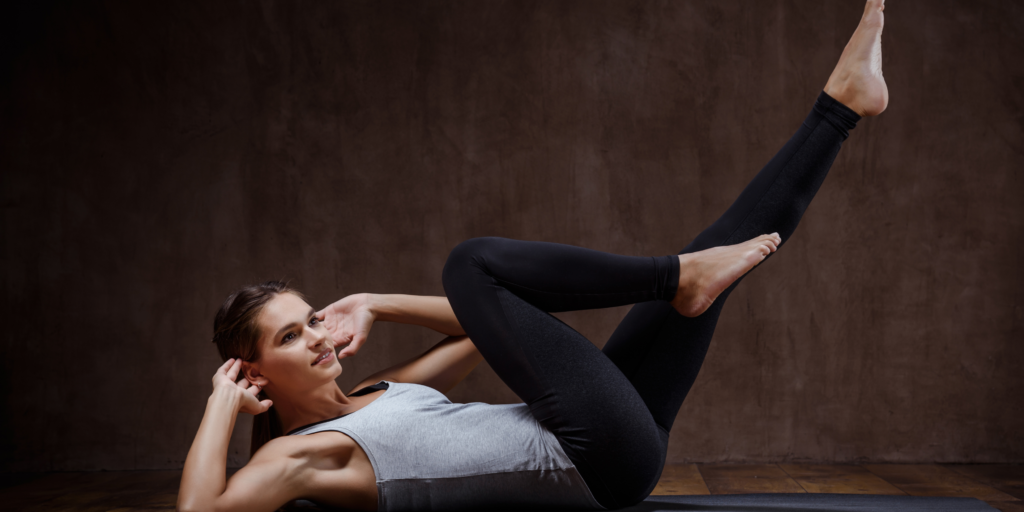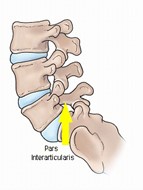
In our previous Pilates blog post we discussed how Pilates can be used in the management of low back pain with a focus on exercises suitable for a Flexion Dysfunction (i.e. pain that gets worse with sitting and bending forwards). This post will concentrate on back pain that increases with arching backwards and standing for a prolonged time. This type of back pain presentation is known as an Extension Dysfunction.
Low back pain that follows an extension dysfunction pattern will often be aggravated by things like prolonged standing in one position (eg standing watching a sports game), lying on your stomach propped up on your elbows reading, or lying on your front doing exercises that involve arching your spine backwards by lifting your hands and feet off the ground. Burpees can also stir this type of back pain up, usually if your hips drop down too low when moving in and out of the push-up position.
Other Low Back Pain Conditions That Can Be Painful With Extension (Arching Backwards)
While the huge majority of low back pain does not have any significant underlying conditions that we should be aware of, there are a few conditions that follow an extension dysfunction pattern that are worth outlining.
Spinal Stenosis
This is a narrowing of the bony canal that runs down the spine. This canal holds the spinal cord and the nerves that branch off the spinal cord. Narrowing of the spinal canal can cause compression to the cord and nerves leading to pain and numbness that can travel down the leg. If you have spinal stenosis, you may feel some of these symptoms:
– Pain increased with long walks, standing, and activities requiring bending backward (extension) and is relieved with bending forward (flexion).
– Pain, numbness, and tingling sensations can travel down both legs or one leg only
– You may experience weakness in your leg
Spondylolisthesis
This is where one vertebra moves forward slightly on the vertebrae below. If you have a spondylolisthesis, you may feel:
– Low back pain with pain travelling into the buttock or the thigh
– Symptoms may become worse when you bend your spine backwards
Spondylolysis

This is a stress-related fracture of a small part of your vertebrae known as the pars interarticularis (a narrow bony bridge at each spinal level that connects two joints). This stress is the highest with bending backward and turning type movements. If you have spondylolysis, some features of your back pain may be;
– The pain gradually gets worse with time, or the pain came on suddenly.
– Your pain can travel down into the buttock or thigh.
– Symptoms may become worse with bending backward or turning movements.
Current Research In Pilates For Low Back Pain
As you know, our treatment is based around current research in the ever changing and developing field of physiotherapy. The current research about Pilates and low back pain tells us that Pilates is more effective for improving pain compared to extension based exercises (Mazloum,V., et al. 2017). Pilates improves strength, muscular resistance, postural balance, pain level, and flexibility in a person with a lower back spondylolisthesis (De Oliveira, L., et al 2015). Recent research (Eliks, M., et al., 2019) showed that Pilates for people with low back pain can be used as a therapeutic option and is recommended to be performed two or three times a week supervised by qualified instructors.
Pilates Exercises for Extension Dysfunction
Generally, people with an extension dysfunction are comfortable in a position that has their back bending forward rather than backward. Therefore these people tend to feel pain with standing, kneeling, or lying on their stomach type positions for Pilates exercises.
Extension dysfunction pain typically responds well to movements that involve bending or curling your lower back forward. Carrying this concept into Pilates, maintaining an imprinted spine (i.e. flattening the curve in your lower back) when lying on your back on the mat can be helpful for this type of pain pattern, rather than keeping a neutral spine (keeping natural curve of your lower back).
If you feel your back pain fits the extension dysfunction pattern then you may find adding these 3 simple matwork exercises into your regular routine very helpful. You don’t need any equipment and they only take a couple of minutes to do, but they can often give you good relief.
1. Prayer Stretch
Kneel on your hands and knees with hands shoulder width apart and knees hip distance apart. Sit back onto your heels, lowering your chest down toward the mat and sliding your hands as far forward along the mat as possible. This exercise stretches your lower back. Hold for 20 seconds and repeat 5 times.
2. Forward Roll Down
Stand upright, knees soft and weight distributed evenly through your feet. As you exhale, begin to roll your spine forwards one vertebrae at a time, allowing your pelvis to roll forward to create a C-shape in your spine. Keep your head, neck, and arms relaxed throughout the rolldown, reaching your hands down towards your toes. Inhale and hold this position. Exhale to begin rolling your spine upwards from your lower back to the crown of your head. Repeat 5 times.
3. Hundreds
Lying on your back, legs in tabletop position and arms resting by your side. Exhale as you pulse your arms up and down in a small arc of movement with your head and shoulders curled up off the mat. Inhale for 5 arm movements and exhale for 5 arm movements for up to 100 beats. This exercise works your abdominal muscles really hard!
Others Helpful Exercise Tips And Cues
People with an extension dysfunction may find in Pilates their tendency is to over-arch their lower back while performing exercises. If this is you, try some of the following cues next time you try your Pilates exercises at home.
– Draw your ribs toward your hips, using your abdominals as you breathe out
– Slide your hip bones towards each other to stop your pelvis from rocking
– For exercises in tabletop position, draw your knees slightly closer toward the chest rather than directly over the hips. Also draw your spine down towards the floor as far as you can without lifting your tailbone.
– Put a small cushion under your head. This puts your spine in slight flexion which can activate your obliques more to prevent your back from arching
Common Exercises To Be Cautious Of With An Extension Dysfunction
– Scooter
– Swan Prep
– Plank
Conclusion
People with a back injury are understandably cautious about adding new exercises to their routine. However, the current thinking around back pain is that movement and exercise is just about the most beneficial thing that you can do, provided you choose exercises that are appropriate for your condition. This is where Pilates can be a good choice because your Pilates program can be fully tailored to your strengths, limitations and specific condition.
If you have found this blog post of interest to you as someone who lives with back pain and would like to find out more information about our Physiotherapist-led Pilates program at Central Performance, please feel free to phone us on 9280 2322 or email our Pilates physio Sonja at Sonja@centralperformance.com.au for some free helpful advice.
References:
Mazloum V, Sahebozamani M, Barati A, Nakhaee N, Rabiei P. The effects of selective Pilates versus extension-based exercises on rehabilitation of low back pain. J Bodyw Mov Ther. 2018 Oct;22(4):999-1003. doi: 10.1016/j.jbmt.2017.09.012. Epub 2017 Sep 20. PMID: 30368347.
Oliveira LC, Guedes CA, Jassi FJ, Martini FAN, Oliveira RG. Effects of the Pilates method on variables related to functionality of a patient with traumatic spondylolisthesis at L4-L5: A case study. J Bodyw Mov Ther. 2016 Jan;20(1):123-131. doi: 10.1016/j.jbmt.2015.07.038. Epub 2015 Jul 26. PMID: 26891647.
Eliks M, Zgorzalewicz-Stachowiak M, Zeńczak-Praga K. Postgrad Med J Epub ahead of print: [please include Day Month Year]. doi:10.1136/ postgradmedj-2018-135920

